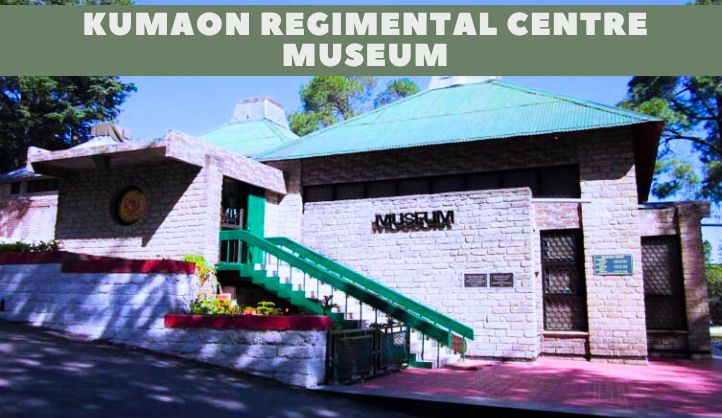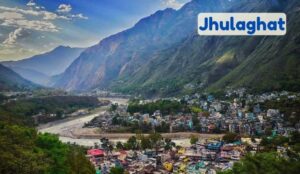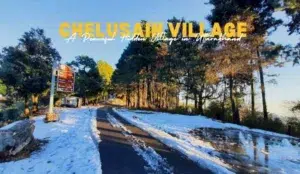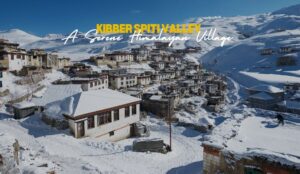Nestled amidst the picturesque hills of Ranikhet in Uttarakhand lies the Kumaon Regimental Centre Museum, a treasure trove of Indian military history. Established in the 1970s by the Kumaon Regiment, this museum stands as a testament to the regiment’s rich legacy and the unparalleled courage of its soldiers.
Stepping inside the KRC Museum is akin to embarking on a journey through time. The meticulously curated exhibits transport visitors to the heart of various battles, showcasing the evolution of warfare and the unwavering spirit of the Kumaon warriors.
A Legacy Etched in Stone
The museum’s interiors are adorned with captivating photographs depicting the Kumaon Regiment’s involvement in various wars. From the bygone era of the Great War (World War I) to the more recent conflicts like Kargil, these visuals narrate tales of resilience and sacrifice made by the Kumaon soldiers.
Stone tablets strategically placed throughout the museum serve as silent chroniclers of the regiment’s glorious past. Inscribed with details of significant battles and campaigns, these tablets pay homage to the fallen heroes and inspire a sense of patriotism in every visitor.
Treasures of War
One of the most captivating aspects of the KRC Museum is its collection of artifacts. Here, history comes alive as you witness firsthand the tools of war employed by both the Kumaon Regiment and their adversaries.
The museum boasts an impressive display of weaponry, including rifles used during the 1962 war with China and relics captured by the Japanese during World War II. This juxtaposition of weaponry allows visitors to appreciate the advancements in military technology over time.
Beyond the Battlefield
The KRC Museum goes beyond portraying the regiment’s prowess in combat. It delves into the lives and traditions of the Kumaon and Garhwal soldiers. Visitors have the opportunity to see the uniforms donned by these brave men throughout history, each piece reflecting a unique era and purpose.
A dedicated section showcases medals of honor awarded to Kumaon soldiers for their extraordinary acts of bravery. Among these, the Param Vir Chakra, India’s highest wartime gallantry award, holds a place of special significance. The museum proudly displays information about the two Param Vir Chakras awarded to soldiers from the Kumaon Regiment – Major Somnath Sharma and Captain Vikram Batra.
A Glimpse into History’s Bylanes
Stepping away from the battlefield narratives, the museum offers a fascinating glimpse into historical figures associated with Indian military history. A rare sight for many visitors is the inclusion of Rani Jhansi’s silver scepters, a potent reminder of her fight for freedom.
Documents and photographs related to the Kargil War offer a deeper understanding of this pivotal conflict. Visitors can gain valuable insights into the strategies employed and the sacrifices made by the Kumaon Regiment to secure victory.
A Legacy Preserved
The KRC Museum not only showcases the regiment’s history but also serves as a vital center for preserving its legacy. The museum houses a shawl weaving center, keeping alive the traditional craft practiced by the Kumaon people. This initiative not only promotes cultural heritage but also empowers local artisans.
Planning Your Visit
The KRC Museum is a must-visit for history buffs, military enthusiasts, and anyone seeking to pay their respects to the sacrifices made by Indian soldiers. Located inside the Army cantonment area in Ranikhet, the museum is open every day from 9:00 AM to 5:00 PM. Photography inside the museum is restricted.
A nominal entry fee is applicable, and visitors are required to provide personal details at the entrance gate.
How to Reach There
Reaching the Kumaon Regimental Centre Museum in Ranikhet requires a journey through the scenic hills of Uttarakhand. Here are the different ways to get to the museum:
- By Car: Ranikhet is well-connected by road to major cities in North India. If you’re coming from Delhi, the distance is approximately 350 kilometers. The route takes you through scenic hill stations like Nainital and Bhimtal. You can find detailed directions and route options at https://maps.google.com/.
- By Train: The nearest railway station to Ranikhet is Kathgodam, located around 85 kilometers away. From Kathgodam, you can hire a taxi or cab to reach Ranikhet.
- By Bus: Regular bus services operate from major cities in Uttarakhand and nearby states to Ranikhet. The bus stand in Ranikhet is approximately 1.5 kilometers from the KRC Museum. You can easily hire a taxi, or rickshaw, or take a leisurely walk to reach the museum.
Once in Ranikhet
Finding the KRC Museum within Ranikhet is quite straightforward. Here are some helpful pointers:
- Look for the Kumaon Regimental Centre Museum located in the cantonment area. The museum is situated within the KRC complex.
- Ask locals for directions to the “Fauji Museum” (Soldier Museum) as the KRC Museum is sometimes referred to locally.
- Most hotels and guesthouses in Ranikhet can provide guidance on reaching the museum.
Additional Tips
- While planning your visit, consider the weather conditions in Ranikhet. The hill station experiences pleasant weather throughout the year, except for the monsoon season (July-September) which can be prone to landslides.
- Comfortable shoes are recommended as there may be some walking involved within the museum complex and around Ranikhet itself.
- Carry a light jacket or sweater, especially if visiting during the evenings or cooler months, as the temperature can drop in the hills.
Extending Your Trip
Ranikhet offers a plethora of sightseeing options beyond the KRC Museum. Here are some suggestions to make the most of your visit:
- Visit the Ranikhet Golf Course: Renowned for its breathtaking views of the Himalayas, this 9-hole golf course is a haven for nature lovers and golf enthusiasts alike.
- Explore the Binsar Wildlife Sanctuary: Embark on a nature trail or a jeep safari in this sanctuary, teeming with diverse flora and fauna.
- Seek blessings at the Jhula Devi Temple: This ancient temple dedicated to Goddess Durga is a popular pilgrimage site and offers panoramic views of the surrounding hills.
- Go for souvenir shopping at the Tibetan Market: Browse through a vibrant collection of Tibetan handicrafts, woolen shawls, and local souvenirs.
By incorporating these suggestions, your trip to Ranikhet can be a well-rounded experience, combining historical exploration at the KRC Museum with the natural beauty and cultural charm of this captivating hill station.
Conclusion
The Kumaon Regimental Centre Museum stands as a testament to the unwavering courage and rich legacy of the Kumaon Regiment. It’s a place where history comes alive, igniting a sense of respect and admiration for the sacrifices made by these brave soldiers. A visit to the museum is not just an educational experience but also a journey that inspires patriotism and a deeper understanding of Indian military history.
So, pack your bags, lace up your walking shoes, and embark on a journey to Ranikhet. Let the KRC Museum be your gateway to a past filled with valor, sacrifice, and the unwavering spirit of the Kumaon warriors.
FAQs about the Kumaon Regimental Centre Museum
1. What are the museum’s opening hours?
The KRC Museum is open every day from 9:00 AM to 5:00 PM.
2. Is there an entry fee?
Yes, a nominal entry fee applies for visitors to enter the museum.
3. Is photography allowed inside the museum?
Unfortunately, photography is not permitted inside the KRC Museum.
4. What are some exhibits I can’t miss?
The museum boasts a diverse collection, but some highlights include:
- Stone tablets chronicling the regiment’s history
- Weaponry displays showcasing the evolution of warfare
- Uniforms worn by Kumaon and Garhwal soldiers throughout history
- Information on the Param Vir Chakras awarded to Kumaon Regiment soldiers – Major Somnath Sharma and Captain Vikram Batra
- Exhibits related to the Kargil War
5. How can I reach the museum?
Ranikhet is well-connected by road, rail, and bus. Once in Ranikhet, the museum is located within the Kumaon Regimental Centre (KRC) complex. You can ask for directions to the “Fauji Museum” or seek guidance from your hotel/guesthouse.





